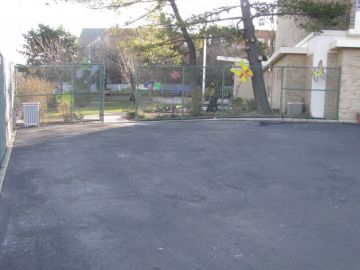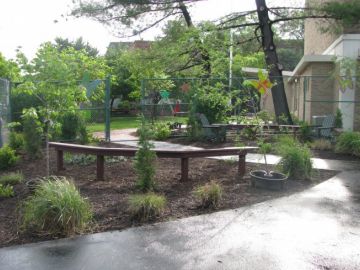Brent Elementary Schoolyard Greening: Phase 1


Landscape Performance Benefits
Environmental
-
Decreases daytime summer surface temperatures by an average of 23°F and air temperature by 9°F by replacing 1,500 sf of asphalt play surface with a rain garden.
-
Holds 720 gallons of stormwater (79% of the 1-year storm) in the rain garden. The ten trees in the rain garden are estimated to intercept an additional 1,600 gallons of stormwater annually.
-
Reduces annual hydrocarbon emissions by 1.83 lb and and carbon monoxide emissions by 69.2 lb, by replacing nearly 6,200 sf of lawn with an outdoor classroom that requires no mowing.
Social
-
Introduced 1-2 hours per week of outdoor classroom experience for grades 1-5, and 4-5 hours per week for preschool and kindergarten. Sixteen classes use the “Nature Classroom” for subjects ranging from science to art, music, and English.
-
Helped increase the demand for enrollment by 191%. The improvements to the school grounds along with other changes in the school and surrounding community contributed to this marked increase.
-
Helped increase student attendance, reading test scores, parent engagement, and parent and staff satisfaction with the school. The improvements to the school grounds along with other changes in the school and surrounding community contributed to this increase.
Other Examples
Bannockburn Pollinator Gardens
Brent Elementary Schoolyard Greening: Phase 1
Glenstone Landscape
Knollwood Life Retirement Green Infrastructure
New York Times Building, Lobby Garden
Sidwell Friends Middle School
At a Glance
-
Designer:
Sustainable Life Designs -
Location:
301 North Carolina Avenue SE Washington, District Of Columbia 20003 -
Size:
18,000 sf -
Project Type:
Playground School/University -
Climate Zone:
Humid subtropical -
Budget:
$289,000 -
Former Land Use:
Institutional -
Completion Date:
2010
